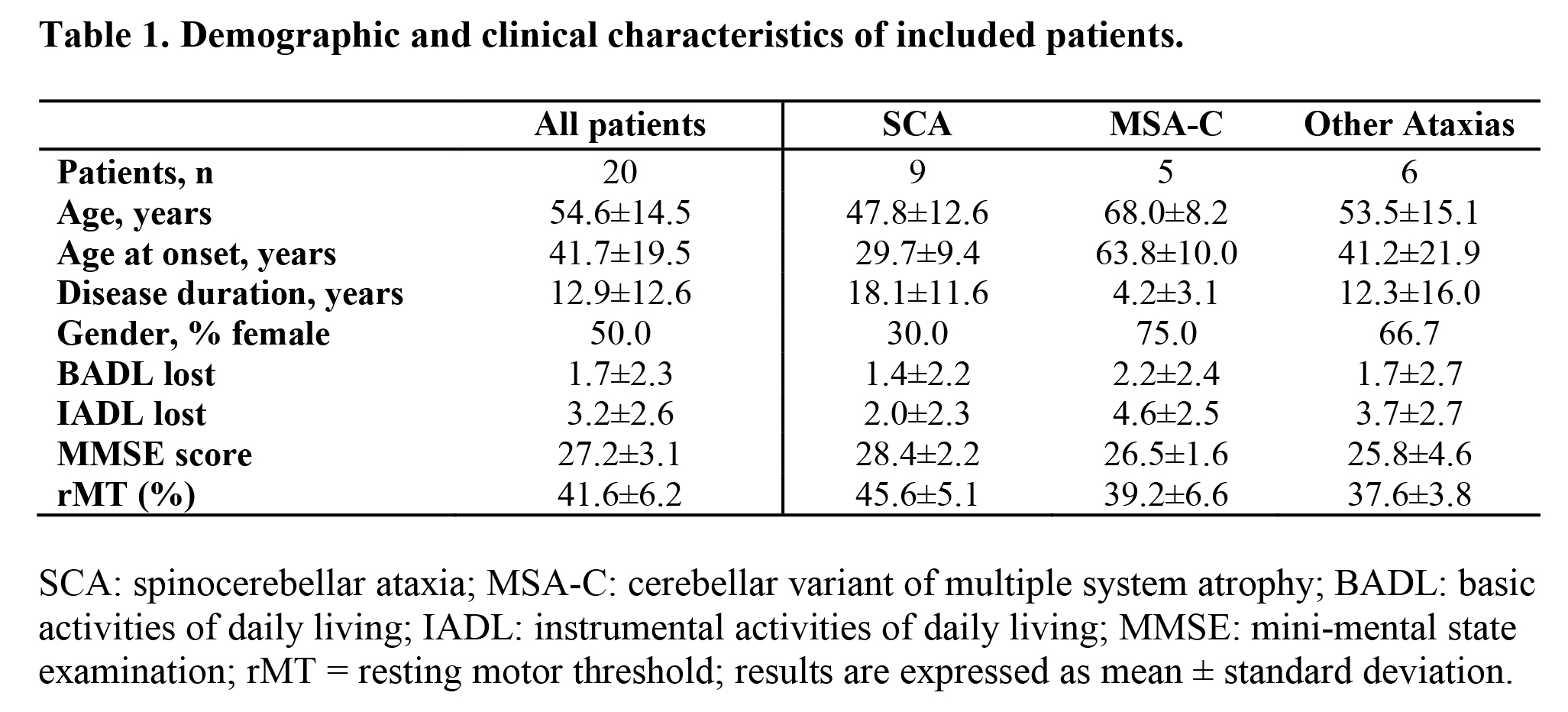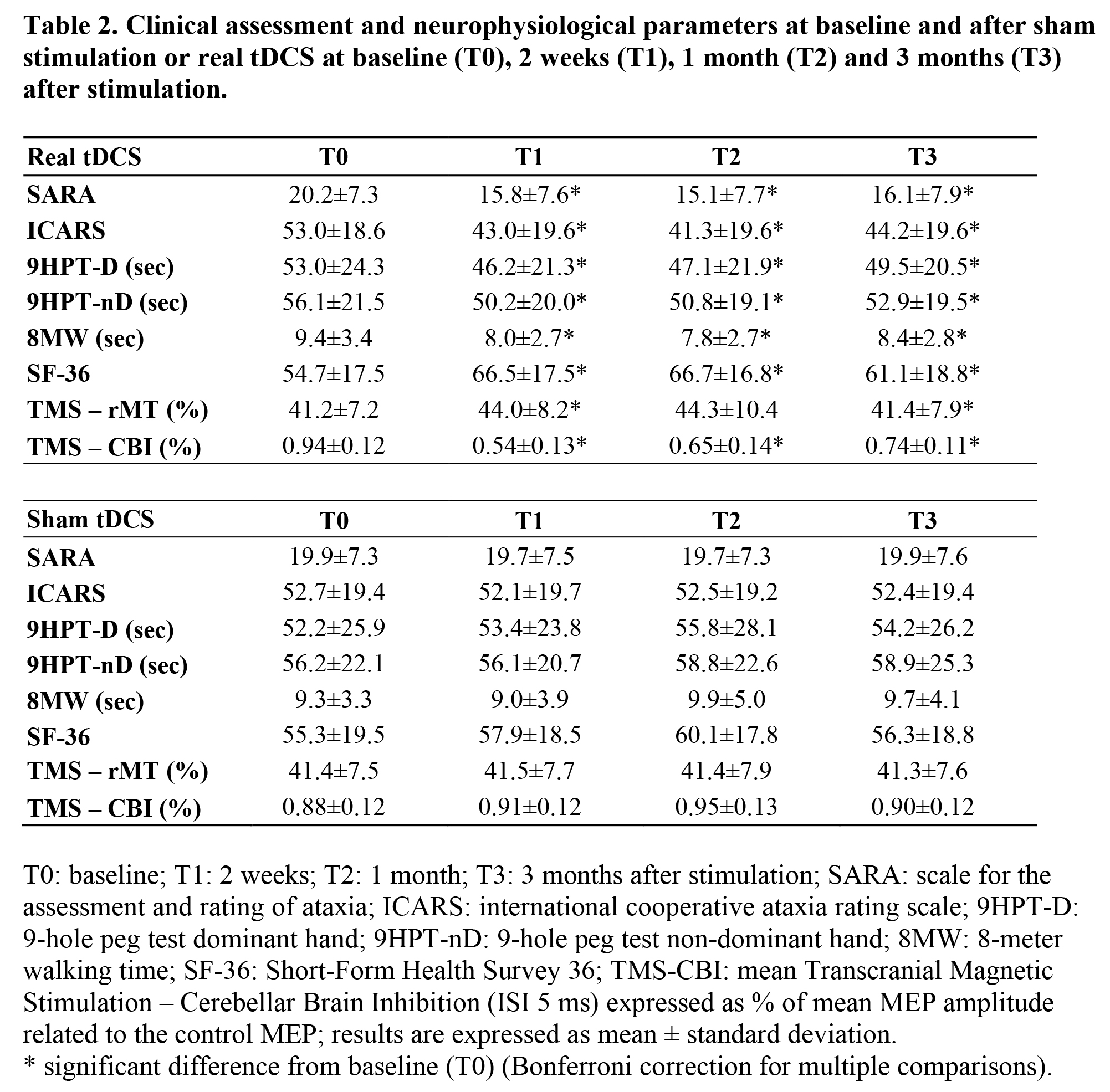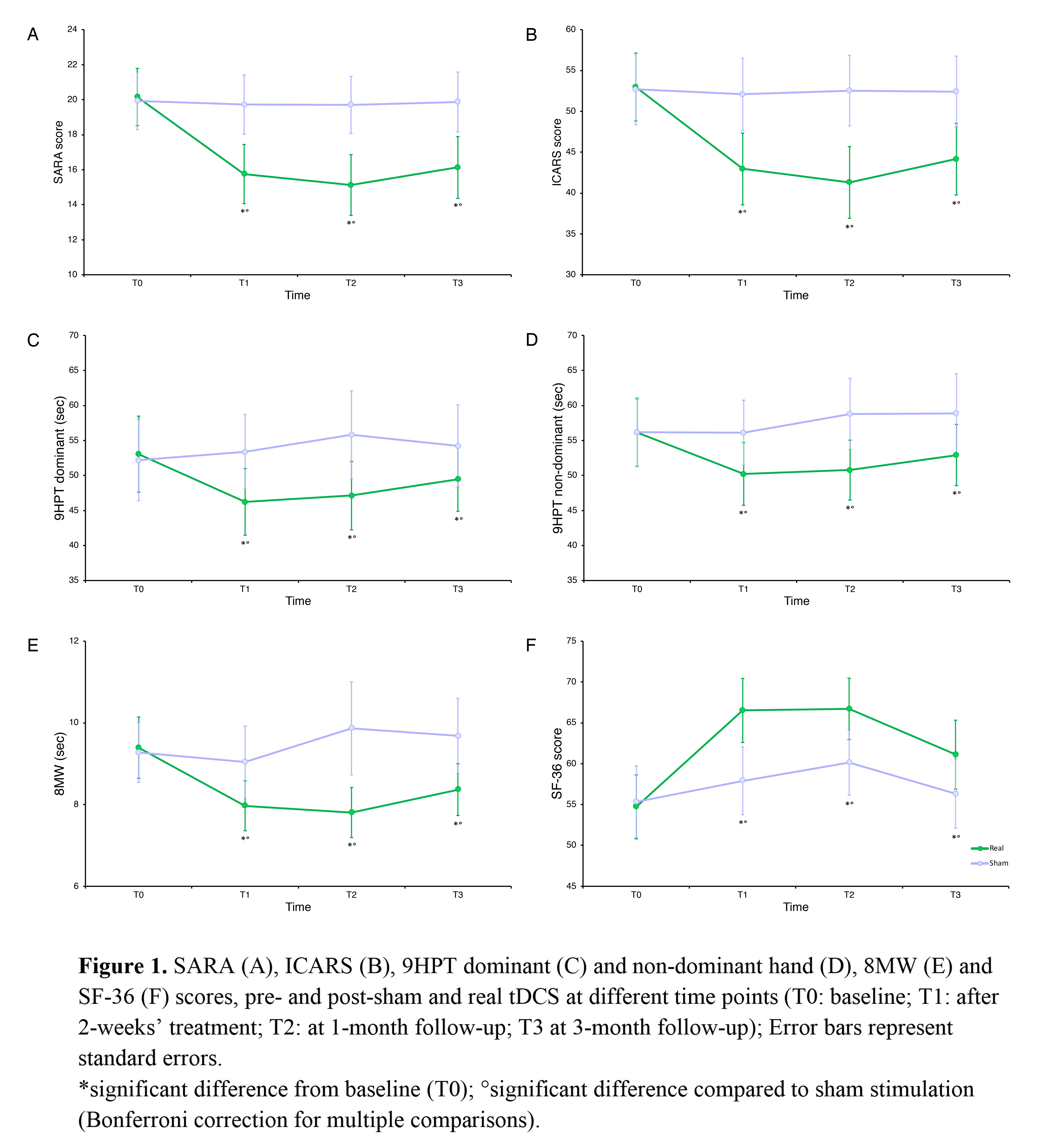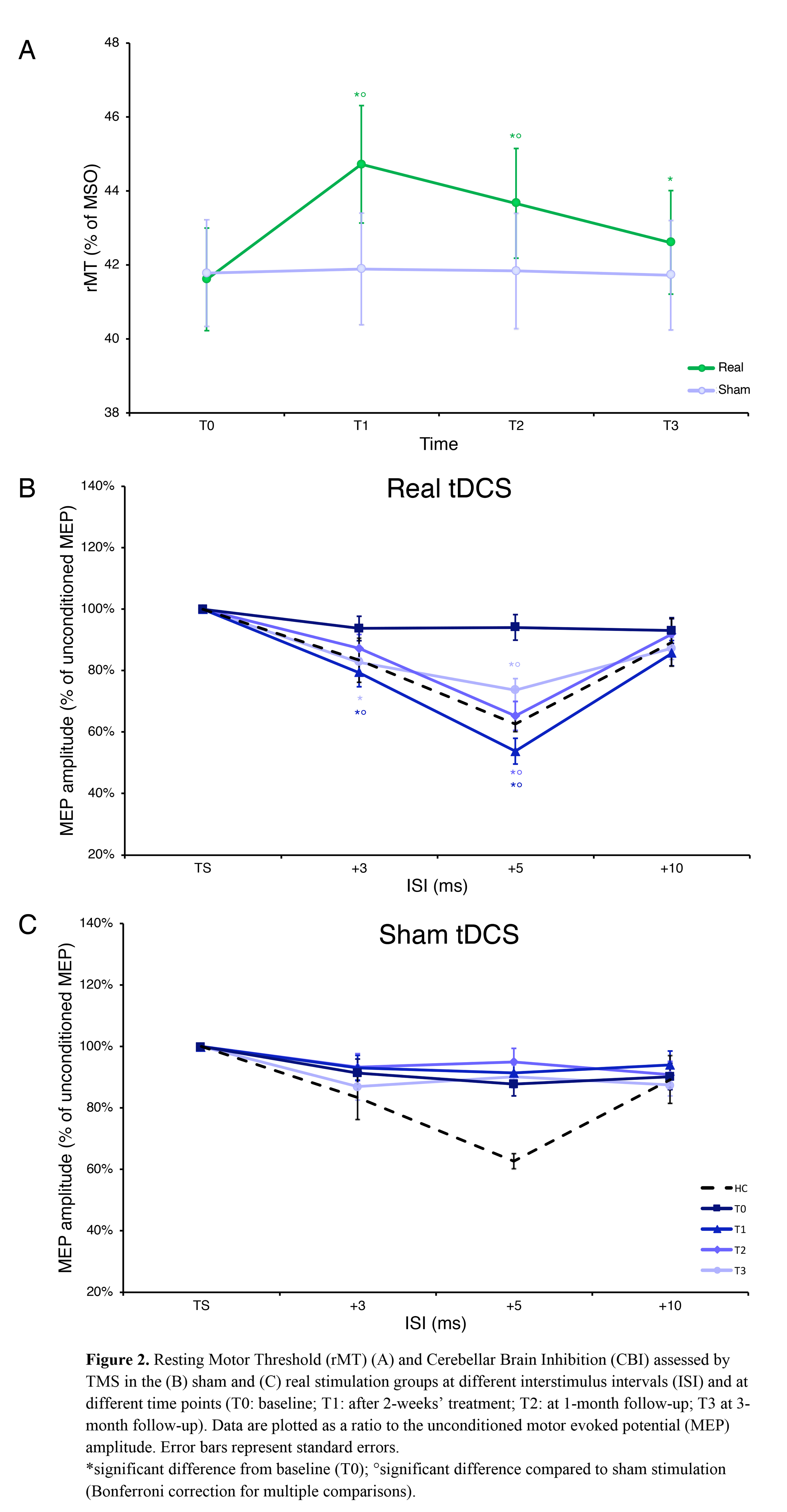Session Information
Date: Sunday, October 7, 2018
Session Title: Ataxia
Session Time: 1:45pm-3:15pm
Location: Hall 3FG
Objective: The present study investigated whether a two-weeks’ treatment with cerebellar anodal and spinal cathodal transcranial direct current stimulation (tDCS) could reduce symptoms in patients with neurodegenerative ataxia and could modulate cerebello-motor connectivity, at short and long term.
Background: Neurodegenerative ataxias represent a heterogeneous group of disabling diseases characterized by limb and gait ataxia, oculomotor deficits, dysarthria, kinetic tremor, and are occasionally affected by cognitive decline. No effective treatment is currently available for most hereditary and sporadic ataxias, and there is growing interest in finding innovative therapeutic approaches to reduce clinical symptoms.
Methods: We performed a double-blind, randomized, sham controlled, cross-over trial with cerebello-spinal tDCS (5 days/week for 2 weeks) in twenty patients with neurodegenerative ataxia. Each patient underwent a clinical evaluation pre- and post-real tDCS or sham stimulation, including scale for the assessment and rating of ataxia (SARA), international cooperative ataxia rating scale (ICARS) scores, 8 meter walking time (8MW) and 9 hole peg test (9HPT). A follow-up evaluation was performed at one and three months, with a cross-over wash-out period of 3 months. Cerebello-motor connectivity was evaluated using transcranial magnetic stimulation (TMS) at baseline and at each follow-up.
Results: Twenty patients were enrolled and randomized to receive sham or real stimulation first in a 1:1 ratio, with cross-over treatment after a three-months washout period after the last evaluation (T3), 6 months after baseline (T0) [table1]. Baseline and follow-up SARA, ICARS scores, 8MW and 9HPT are reported in Table 2 [table2]. Patients who underwent cerebello-spinal tDCS showed a significant improvement in all performance scores (SARA, ICARS scores, 8MW and 9HPT) [figure1], in motor cortex excitability and in cerebellar brain inhibition compared to sham stimulation [figure2].
Conclusions: A two-weeks’ treatment with cerebello-spinal tDCS reduces symptoms in patients with ataxia and restores motor cortex inhibition exerted by cerebellar structures. Cerebello-spinal tDCS might represent a promising future therapeutic and rehabilitative approach in patients with neurodegenerative ataxia, a still orphan disorder of any pharmacological intervention.
References: Benussi A, Koch G, Cotelli M, Padovani A, Borroni B. Cerebellar transcranial direct current stimulation in patients with ataxia: A double-blind, randomized, sham-controlled study. Mov Disord. 2015;30:1701-1705. Benussi A, Dell’Era V, Cotelli MS, et al. Long term clinical and neurophysiological effects of cerebellar transcranial direct current stimulation in patients with neurodegenerative ataxia. Brain Stimul. 2017;10:242-250.
To cite this abstract in AMA style:
A. Benussi, V. Dell'Era, V. Cantoni, E. Bonetta, R. Grasso, R. Manenti, M. Cotelli, A. Padovani, B. Borroni. Cerebello-spinal stimulation in neurodegenerative ataxia: A randomized, double-blind, sham-controlled, crossover trial [abstract]. Mov Disord. 2018; 33 (suppl 2). https://www.mdsabstracts.org/abstract/cerebello-spinal-stimulation-in-neurodegenerative-ataxia-a-randomized-double-blind-sham-controlled-crossover-trial/. Accessed December 12, 2025.« Back to 2018 International Congress
MDS Abstracts - https://www.mdsabstracts.org/abstract/cerebello-spinal-stimulation-in-neurodegenerative-ataxia-a-randomized-double-blind-sham-controlled-crossover-trial/




